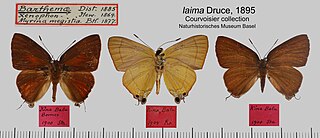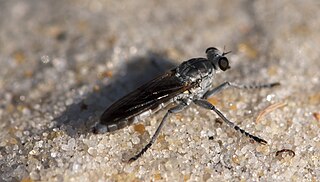Quintus Lutatius Catulus was a consul of the Roman Republic in 102 BC. His consular colleague was Gaius Marius. During their consulship the Cimbri and Teutones marched south again and threatened the Republic. While Marius marched against the Teutones in Gaul, Catulus had to keep the Cimbri from invading Italy. In this he failed; the Cimbri succeeded in invading the Po Valley. In 101 BC Catulus, as proconsul, continued the war against the Cimbri. Marius, elected consul for the fifth time, joined him and together they campaigned against the Germanic invaders in the Po Valley. At the Battle of Vercellae Marius and Catulus decisively defeated the Cimbri and ended the Germanic invasion. After Vercellae the two feuded, and Catulus consequently committed suicide following Marius's victory in the civil war of 87 BC.

The Battle of Vercellae or Battle of the Raudine Plain was fought on 30 July 101 BC on a plain near Vercellae in Gallia Cisalpina. A Celto-Germanic confederation under the command of the Cimbric king Boiorix was defeated by a Roman army under the joint command of the consul Gaius Marius and the proconsul Quintus Lutatius Catulus. The battle marked the end of the Germanic threat to the Roman Republic.

The brown catshark is commonly found in the Pacific Ocean, ranging from the northern Pacific waters off the coast of British Columbia and south to the Baja California peninsula in Mexico. They may live as far south as Ecuador and Peru. Brown catsharks are deep-water sharks that live on the outer continental shelf and the upper slope. They have been known to live at depths ranging from 30 to 650 m and live on the bottom, usually in muddy or sandy areas. The brown catshark, when originally described, was called Catulus brunneus.

The lollipop catshark is a little-known species of shark belonging to the family Pentanchidae, the deepwater catsharks, and the only described member of its genus. A diminutive, bottom-dwelling shark of the outer continental shelf and upper continental slope, this species can be readily identified by its tadpole-like shape with a greatly expanded, rounded head and narrow body. The large head houses expanded gills, which are thought to be an adaptation for hypoxic conditions. This shark preys on crustaceans and fishes. Reproduction is aplacental viviparous, with females retaining egg cases internally two at a time until they hatch. There is no fishery interest in this species.

Rapala suffusa, the suffused flash, is a lycaenid or blue butterfly found in Myanmar, northern India, Assam, Thailand, Indochina and Palawan. The species was first described by Frederic Moore in 1878.

Stichopogon is a genus of small robber flies of the subfamily Dasypogoninae. There are at least 100 described species in Stichopogon.
Catulus is a genus of fungi in the class Dothideomycetes. The relationship of this taxon to other taxa within the class is unknown. A monotypic genus, it contains the single species Catulus aquilonius.

Elysia catulus is a small species of sea slug, a marine gastropod mollusc in the family Plakobranchidae. This sea slug resembles a nudibranch, but it is not closely related to that order of gastropods, instead it is a sacoglossan. The specific name "catulus" comes from the Greek and means "little cat", referring to the superficial resemblance that the head of this slug bears to the head of a cat.
Elysia serca, the seagrass elysia or Caribbean seagrass elysia, is a species of sea slug, a marine gastropod mollusc in the family Plakobranchidae. Although this sea slug resembles a nudibranch, it is not a nudibranch; it belongs to the clade, Sacoglossa, the "sap-sucking" sea slugs. It was first described by Marcus in 1955 from specimens found in Brazil.

iNaturalist is an American 501(c)(3) nonprofit social network of naturalists, citizen scientists, and biologists built on the concept of mapping and sharing observations of biodiversity across the globe. iNaturalist may be accessed via its website or from its mobile applications. iNaturalist includes an automated species identification tool, and users further assist each other in identifying organisms from photographs and even sound recordings. As of 9 July 2024, iNaturalist users had contributed approximately 197,660,888 observations of plants, animals, fungi, and other organisms worldwide, and 290,007 users were active in the previous 30 days.
Temnosternus catulus is a species of beetle in the family Cerambycidae. It was first described by McKeown in 1942. It is known from Australia.
Gracilentulus catulus is a species of proturan in the family Acerentomidae. It is found in Africa, Europe, and Northern Asia.

Stichopogoninae is a subfamily of robber flies in the family Asilidae. There are about 14 genera and at least 230 described species in Stichopogoninae.

Stichopogon abdominalis is a species of robber fly in the family Asilidae.
Stichopogon argenteus is a species of robber flies, insects in the family Asilidae.
Stichopogon colei is a species of robber flies, insects in the family Asilidae.

Stichopogon trifasciatus, the three-banded robber fly, is a species of robber flies, insects in the family Asilidae.
Stichopogon fragilis is a species of robber flies, insects in the family Asilidae.
Gaius Lutatius Catulus was a Roman statesman and naval commander in the First Punic War.











